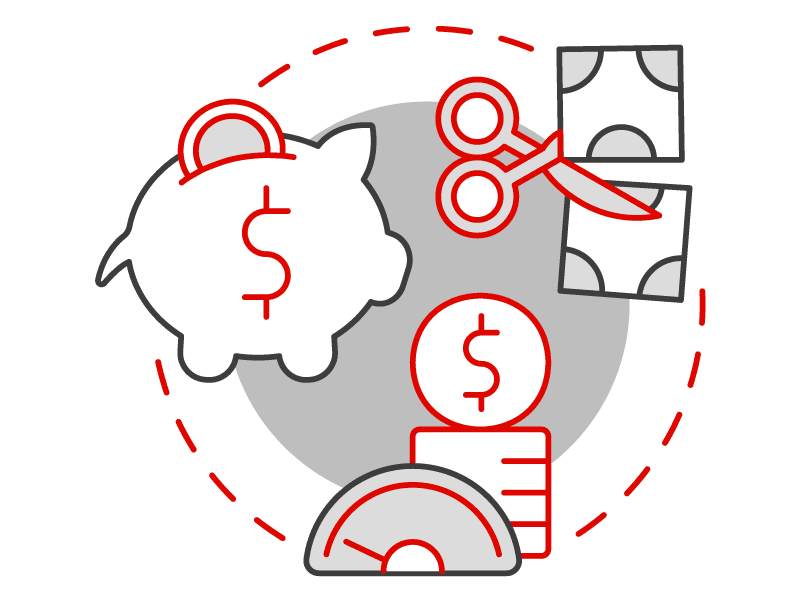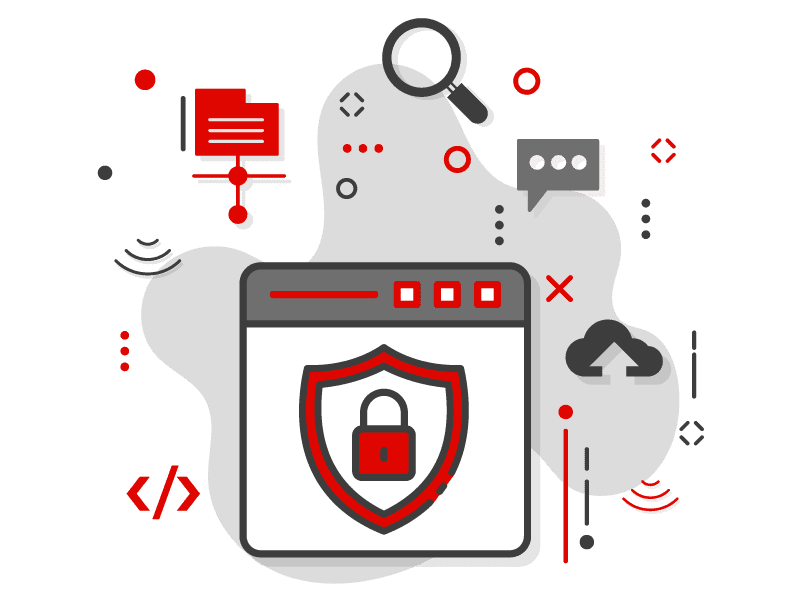
7 Customer Portal Best Practices in B2B Ecommerce

Marketing Team
k-ecommerce

If you own, manage, or are part of a B2B company whose business strategy includes ecommerce, you’re probably no stranger to the increasing demand for self-service options among customers.
As more transactions and interactions shift online, a B2B customer portal lies at the heart of meeting these demands. It offers a centralized hub where clients can access self-service tools, information, and support anytime.
A study by Valtech and Copperberg found that 66% of manufacturers planned to invest in customer portals in 2024 — a clear indicator of their importance in the modern business landscape.
However, for many B2B firms, implementing a customer portal is only half the battle. The real challenge is making sure the portal delivers real, tangible value. This guide breaks down some proven best practices for creating a B2B ecommerce customer portal that does exactly that.
What is a B2B Customer Portal?
A B2B ecommerce customer portal is a self-service platform where clients, such as manufacturers, wholesalers, retailers, or distributors, can independently manage their interactions with your business.
Instead of relying on sales reps or customer support teams for every request, your clients can use the portal to access important features or services directly.
For example, through the hub, customers can:
- Access product information and view product catalogs
- Place orders
- Track shipments
- Manage invoices and payment details
- Access and download critical data and documents (e.g., contracts or product manuals)
- Get support
Why B2B Ecommerce Customer Portals Matter
 Today’s B2B customers want more autonomy and convenience when interacting with brands. For instance, they don’t want to ring your sales reps or customer service teams whenever they need something done or encounter an issue. Instead, they want you to give them tools that enable them to self-serve.
Today’s B2B customers want more autonomy and convenience when interacting with brands. For instance, they don’t want to ring your sales reps or customer service teams whenever they need something done or encounter an issue. Instead, they want you to give them tools that enable them to self-serve.
Findings from multiple studies confirm this growing preference for self-service in B2B ecommerce. A 2023 survey by TrustRadius found that almost 100% of B2B buyers want to self-serve all or part of their purchase journey. Meanwhile, Salesforce found that 61% of customers prefer solving simple issues via self-service options rather than contacting customer support.
A B2B ecommerce customer portal provides a perfect tool to meet these new customer expectations and preferences. Beyond that, offering self-service through a customer portal also makes great business sense.
Research shows that brands that offer self-service solutions often perform better than those that don’t. The aforementioned Salesforce survey also found that 80% of high-performing businesses offer self-service capabilities, compared to just 56% of low-performing businesses.
What are the Benefits of a B2B Customer Portal?
Here’s what you and your brand stand to gain by implementing a B2B ecommerce customer portal.
Enhanced Customer Experiences
B2B customer portals streamline the buying process for customers. They offer an intuitive interface where customers can easily find product details, place and track orders, and communicate with your team.
That creates an overall seamless and satisfying experience for customers, which can foster trust and loyalty.
More Efficient Sales Process
Customer portals streamline and speed up the sales cycle by automating repetitive or routine tasks such as confirming product availability and generating quotes or invoices. Besides speeding up sales, automation frees up your sales team to focus more on high-value activities such as acquiring new customers or nurturing relationships with existing ones.
24/7 Access
Portals provide your customers with round-the-clock access to the resources or tools they need to conduct business with you. For global businesses, this continuous availability is especially crucial. It eliminates delays that may result from time zone differences and allows them to maintain operational momentum.
Reduced Administrative and Customer Service Costs
 Enabling self-service for repetitive tasks or common inquiries reduces the need for a large sales or customer service team and lightens the workload for the existing staff. You can run a more efficient operation with lower labor costs.
Enabling self-service for repetitive tasks or common inquiries reduces the need for a large sales or customer service team and lightens the workload for the existing staff. You can run a more efficient operation with lower labor costs.
Increased Customer Retention
A well-functioning customer portal creates a more engaging, hassle-free purchase experience for customers. This can have a direct impact on retention rates.
When customers can manage their accounts seamlessly, track their orders, and access support when needed through your portal, they are less likely to seek alternatives.
Scalability
A B2B ecommerce customer portal enables businesses to handle an increased number of customers or transactions without requiring a proportional increase in staff or operational resources. For instance, since the portal automates order-related processes, you won’t need to hire more staff if the volume of orders increases.
To put it another way, customer portals can ensure that business growth doesn’t come with an exponential increase in operational costs.
B2B Ecommerce Customer Portal Best Practices
Creating a successful B2B ecommerce customer portal requires a thoughtful and strategic approach. Here are some best practices for creating a portal that delivers value to customers.
1. Focus on a User-friendly Design
A user-friendly design ensures customers can navigate your portal effortlessly, access information quickly, and complete tasks with minimal frustration.
Elements that make up a user-friendly design include:
- Logical and hierarchical menu structures
- Prominent search bar with auto-suggestions
- Clear calls-to-action (CTAs)
- Ample white space
- Consistent design elements (e.g., colors)
- Readable fonts
Besides the above design elements, make sure your portal offers a seamless experience across all devices.
Research shows that as many as 80% of B2B buyers use mobile devices in the course of their purchasing journey. Implement a responsive design to guarantee a smooth experience for all users regardless of the device they are using to access your platform.
2. Enable Self-Service Capabilities
Provide a variety of self-service tools that put control in the hands of customers. For example, let customers view and manage orders, request quotes, access invoices, track shipments in real time, and update account details like billing and shipping addresses.
Moreover, you should offer essential support resources that allow customers to resolve issues independently. These can include:
- FAQs addressing common customer queries
- A knowledge base filled with helpful articles, guides, and troubleshooting resources
- AI chatbots that engage, assist, and support customers throughout their shopping journey
- A community forum where users can post questions, share experiences, or even answer each other’s queries
And remember that while self-service tools are useful, there will be times when customers need to escalate an issue or talk to an actual human.
Therefore, in addition to these self-service options, you should offer other resources, like a live chat feature where customer service agents can communicate with customers in real time or an easy-to-use ticketing system that lets customers submit detailed queries or issues requiring further investigation.
3. Personalize Customer Experiences
B2B customers want personalized experiences from the brands they interact with. A survey by Exclaimer found that 86% of B2B marketing leaders consider one-on-one personalization important for business success.
Here are some ways to personalize customer experiences:
- Show personalized product catalogs: Display product catalogs that are specifically curated based on the customer’s purchasing history or industry. This can provide a more relevant shopping experience for your customers.
- Tailored pricing and payment terms: Offer each customer or different customer groups custom pricing, discounts, and payment terms based on their relationship with your business.
- Personalized recommendations: Use predictive analytics or AI to suggest products based on the customer’s browsing and purchasing behavior. Personalized recommendations enhance cross-selling and upselling opportunities while making the shopping experience more relevant for each customer.
- Account management customization: Allow customers to set preferences for things like language, payment methods, and delivery options.
4. Implement Robust Security Measures
 B2B transactions usually involve substantial amounts of money and sensitive data, making security a top concern for customers. There are several ways to enhance security on your customer portal and your ecommerce website.
B2B transactions usually involve substantial amounts of money and sensitive data, making security a top concern for customers. There are several ways to enhance security on your customer portal and your ecommerce website.
For example, you can implement multi-factor authentication (MFA) to prevent unauthorized access to customers’ accounts. Also, you should use strong encryption protocols (like TLS/SSL) to protect data transmitted through the portal. Encryption ensures that even if malicious actors intercept the data, they can’t read it.
Also, make sure your portal complies with relevant security regulations, such as the (PCI DSS) (for payment processing) and the GDPR (for data privacy).
Lastly, periodic security audits are a good practice to identify vulnerabilities or weaknesses and take corrective action promptly.
5. Integrate Portal With Other Business Tools and Systems
Unlock even more value from your customer portal and enhance operational efficiency by integrating it with other essential business tools to streamline operations.
For example, integrating your customer portal with ERP ensures real-time synchronization of inventory data. When a customer places an order, inventory records are automatically updated across your entire enterprise in real time. This helps prevent issues such as stockouts or overselling.
Meanwhile, connecting your portal to your CRM system gives your customer service reps access to relevant customer information and history — such as past orders, support tickets, preferences, and purchase behavior.
This information can enable them to offer highly personalized support, making each interaction feel more tailored and relevant to the customer.
6. Use Data, Analytics, and Feedback to Improve Continuously
 Data is a powerful tool for continuously enhancing your B2B customer portal. Implement tools that track user behavior within the portal, such as which pages are visited most, where users drop off, and which products are frequently searched for.
Data is a powerful tool for continuously enhancing your B2B customer portal. Implement tools that track user behavior within the portal, such as which pages are visited most, where users drop off, and which products are frequently searched for.
Furthermore, you should encourage users to provide feedback directly on the portal. For example, prompt them to rate their experience after a transaction or ask what extra features they would like to see.
Use these insights to guide improvements. These can include improving the product search functionality, refining the checkout process, or adding new features based on user feedback.
7. Future-Proof Your Portal
Design your customer portal with scalability in mind. That is, make sure it can accommodate not only today’s requirements but also tomorrow’s business growth.
One effective strategy for future-proofing your portal is to leverage cloud-based infrastructure. Cloud solutions offer unmatched flexibility and scalability, allowing your portal to evolve seamlessly as your business grows.
Unlike traditional systems, cloud-based platforms can automatically adjust to meet rising demands for aspects like storage, processing power, and enhanced security. Additionally, cloud infrastructure simplifies upgrades and minimizes the need for significant investments in physical hardware.
Final Thoughts: B2B Ecommerce Customer Portal Best Practices
A customer portal is a critical part of today’s B2B experience. In that sense, an optimized portal can deliver multiple benefits to your brand, including enhanced customer experiences, more streamlined sales processes, and reduced admin and customer service costs.
K-ecommerce’s cloud-based B2B ecommerce solution offers everything you need to build an intuitive, efficient, and scalable customer portal that optimizes your customers’ experiences and drives meaningful results for your business.
Request a free demo to see how our solution can elevate your B2B ecommerce strategy.


